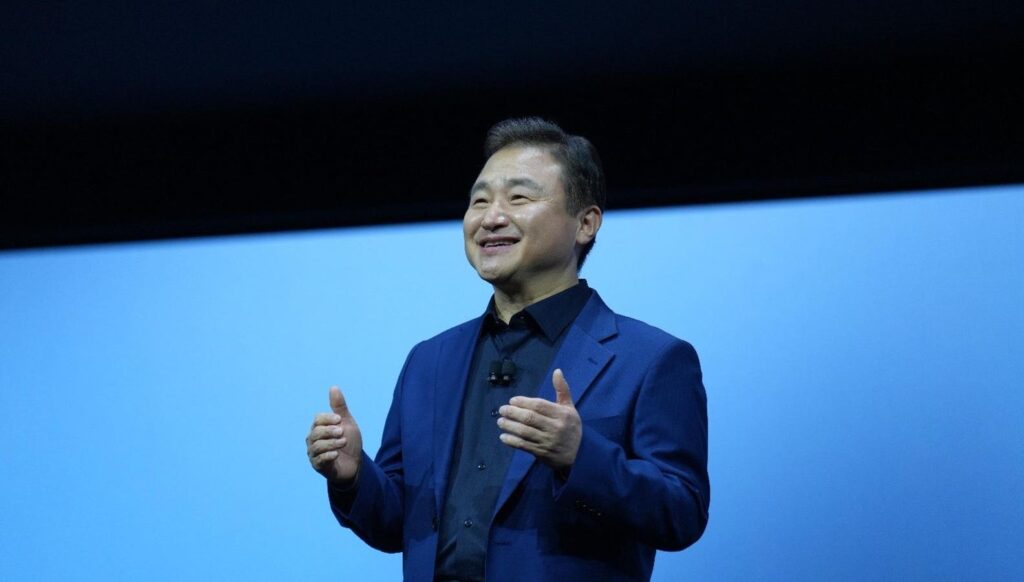
Samsung’s Galaxy Unpacked event in Brooklyn this week marked a significant milestone with the launch of the seventh generation of the Galaxy Z foldable smartphones. After years of trailing behind competitors in a market it once pioneered, Samsung’s new Galaxy Z 7 series aims to reclaim its position as a leader in the foldable phone arena.
The event was headlined by TM Roh, Samsung’s head of device and mobile experience, who introduced the Galaxy Z Fold7 and Z Flip7, signaling a renewed commitment to innovation in foldable technology. This development follows a period where Samsung, despite being an early adopter with the original Galaxy Z Fold in 2019, saw its market share eroded by rivals such as Huawei, Oppo, Vivo, Xiaomi, and Motorola.
The Galaxy Z Fold7: A Leap Forward in Foldable Design
The Galaxy Z Fold7 represents Samsung’s flagship entry in the foldable market, boasting the largest screens and fastest processors in the lineup. Notably, it features a slim design, measuring just 4.2mm when unfolded. This is a testament to Samsung’s engineering prowess, as the device maintains a thickness only slightly more than a USB-C port.
When folded, the Z Fold7’s thickness is 8.9mm, marginally thicker than the Galaxy S25 Ultra. This is a crucial improvement, given that many users criticized the inner display crease in previous models. Samsung’s new Armor FlexHinge, which incorporates a multi-rail structure with a carbon fiber layer, significantly reduces this crease, enhancing the overall user experience.
The Z Fold7’s main screen is 11% larger than its predecessor, measuring 8 inches, with a 6.5-inch cover screen. Both screens support a 120-hertz refresh rate.
Under the hood, the Z Fold7 is powered by the Snapdragon 8 Elite for Galaxy processor, ensuring it remains competitive with the S25 Ultra. Storage options start at 256GB with 12GB of RAM, upgradable to 1TB and 16GB. However, some critics argue that the starting storage should be higher, given Samsung’s expertise in RAM and storage technology.
Camera and Battery Enhancements
The Z Fold7’s camera system includes a 200MP main sensor, a 10MP selfie camera, a 12MP ultrawide, and a 10MP 3x telephoto lens. While some users may miss a 5x optical telephoto option, Samsung’s design choices prioritize maintaining a slim profile over additional camera features.
The battery capacity remains at 4400 mAh, but thanks to the Snapdragon 8 Elite processor, users can expect an extra hour of video playback. Despite this improvement, Samsung’s battery capacity lags behind competitors, with many offering over 5000 mAh.
Samsung Galaxy Z Flip7 and Z Flip7 FE: Accessible Foldables
The Z Flip7 and Z Flip7 FE are designed to be more accessible and mainstream, with the latter being Samsung’s first Fan Edition (FE) in the Flip series. The Z Flip7 introduces a 4.1-inch cover display, known as the FlexWindow, which surpasses the Moto Razr Ultra’s 4.0-inch display.
Both models feature Samsung’s latest Exynos processors, with the Z Flip7 powered by the Exynos 2500 and the Z Flip7 FE by the Exynos 2400. These processors promise competitive performance, though real-world benchmarks are yet to confirm their efficiency.
The Z Flip7 starts at $1,099, while the Z Flip7 FE is priced at $899, making them attractive options for budget-conscious consumers.
Camera and Connectivity
The Z Flip7 maintains a dual-camera setup with a 50MP main sensor and a 12MP ultrawide lens, alongside a 10MP selfie camera. While this setup is adequate, it falls short of competitors like Motorola, which offer dual 50MP sensors.
Connectivity options include Samsung’s latest 5G modem and Wi-Fi 7 for the Z Flip7, while the Z Flip7 FE uses Wi-Fi 6E. These features ensure that users remain connected with high-speed internet access.
The Future of Samsung’s Foldable Line
Samsung’s latest foldable phones mark a significant step forward, particularly with the Galaxy Z Fold7, which aims to deliver a premium experience comparable to the Galaxy S Ultra line. The Z Flip7 and Z Flip7 FE, on the other hand, target a younger audience and compete on price and features.
Looking ahead, Samsung’s focus on software, including Android 16 and OneUI 8, enhances the functionality of these devices, particularly for productivity-minded users. The company’s investment in software and hardware improvements is likely to attract new users and encourage upgrades from existing customers.
As Samsung continues to refine its foldable technology, future iterations may address current shortcomings, such as battery capacity and charging speed. The company’s ability to innovate in these areas will be crucial in maintaining its competitive edge in the foldable market.
Overall, the Galaxy Z Fold7 and Z Flip7 series represent a promising evolution in Samsung’s foldable lineup, with the potential to reshape consumer perceptions and drive adoption of foldable technology.







